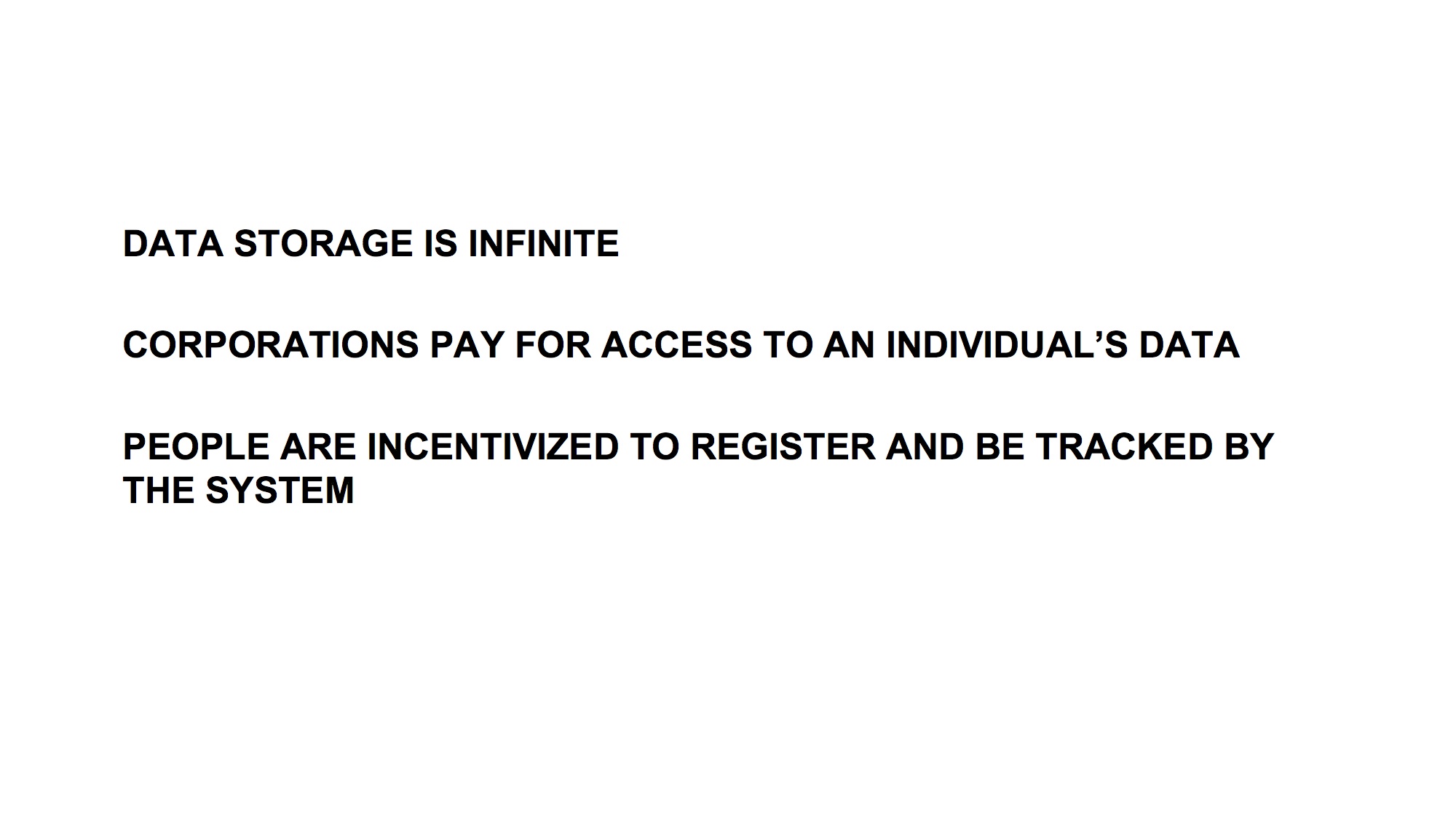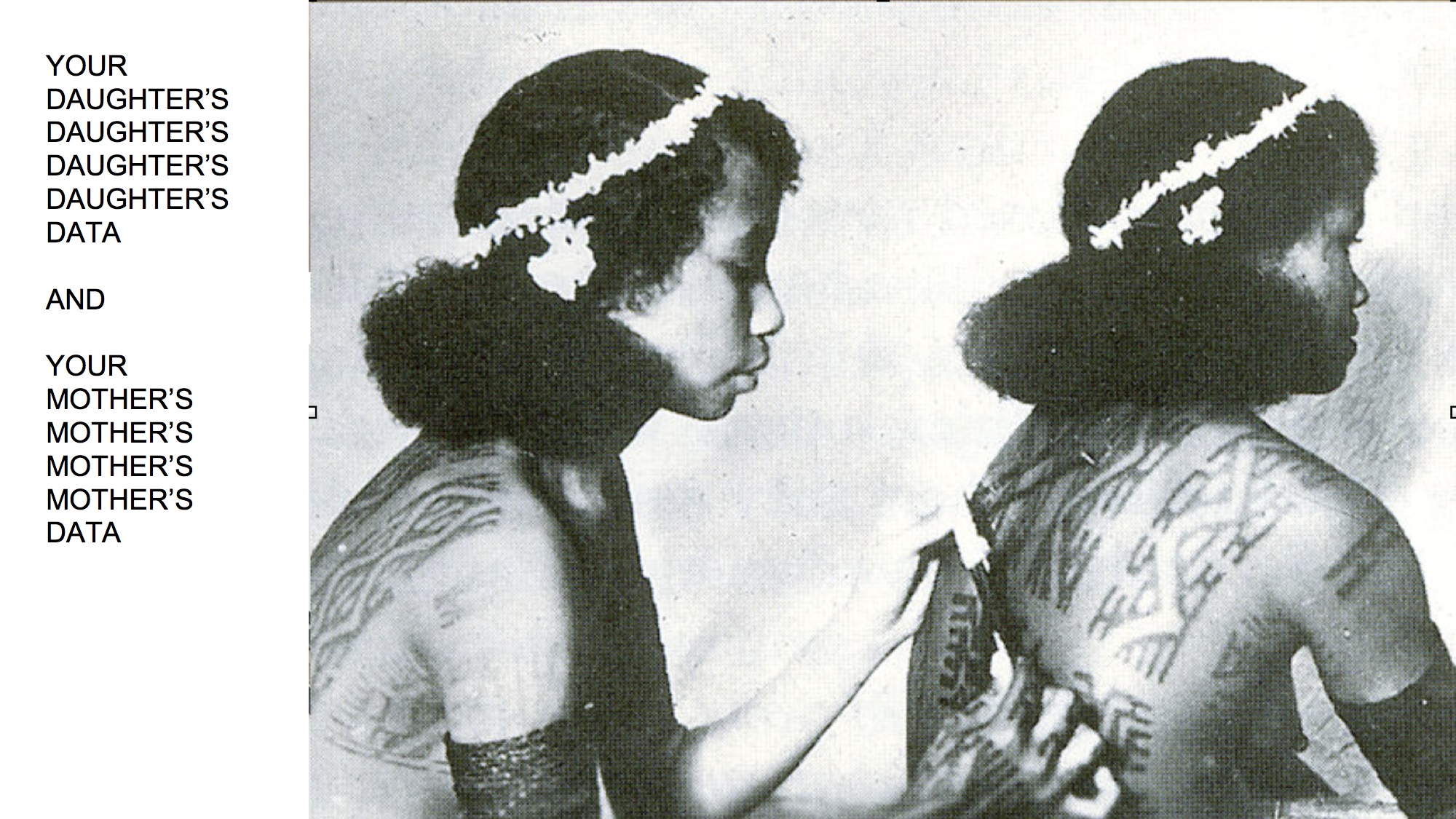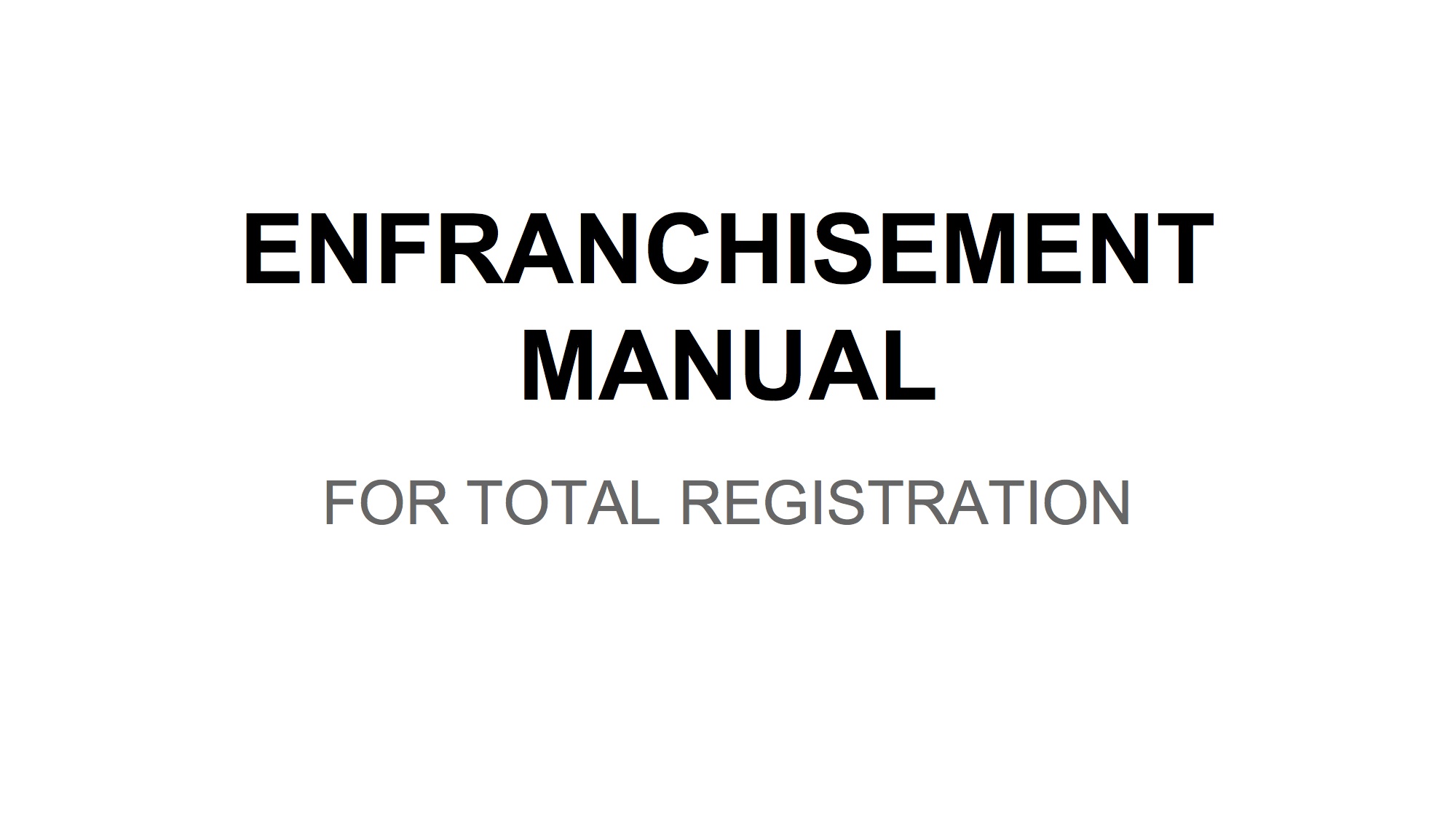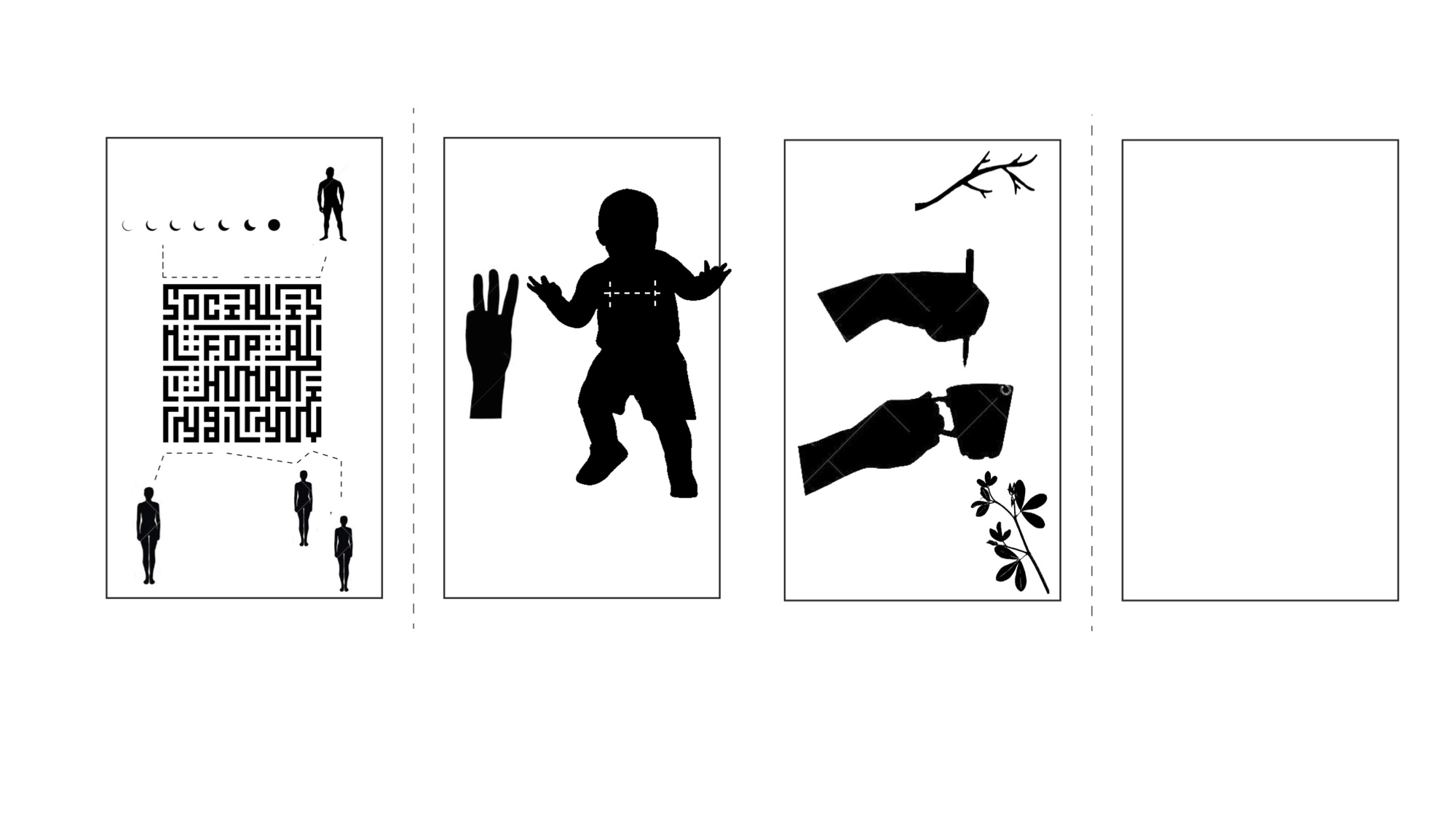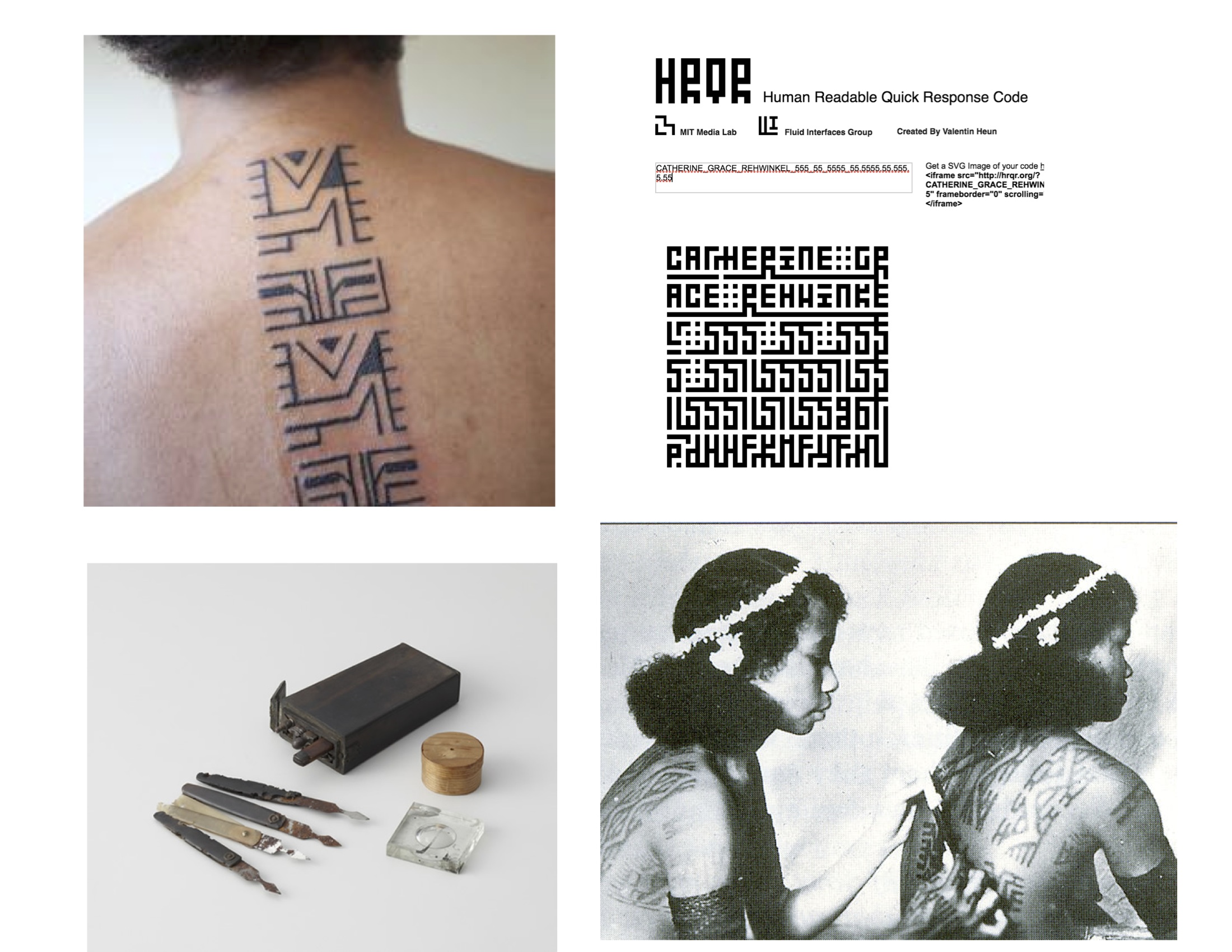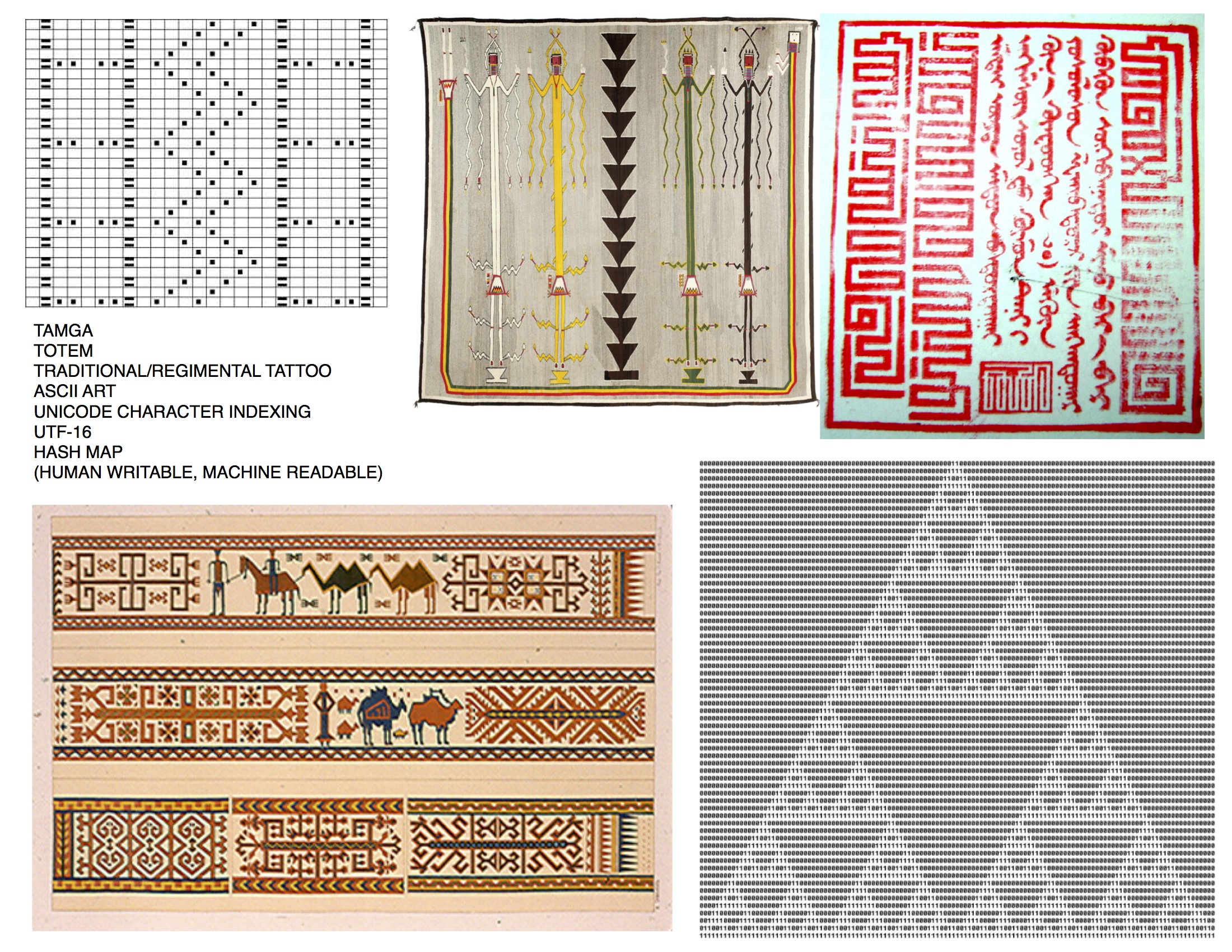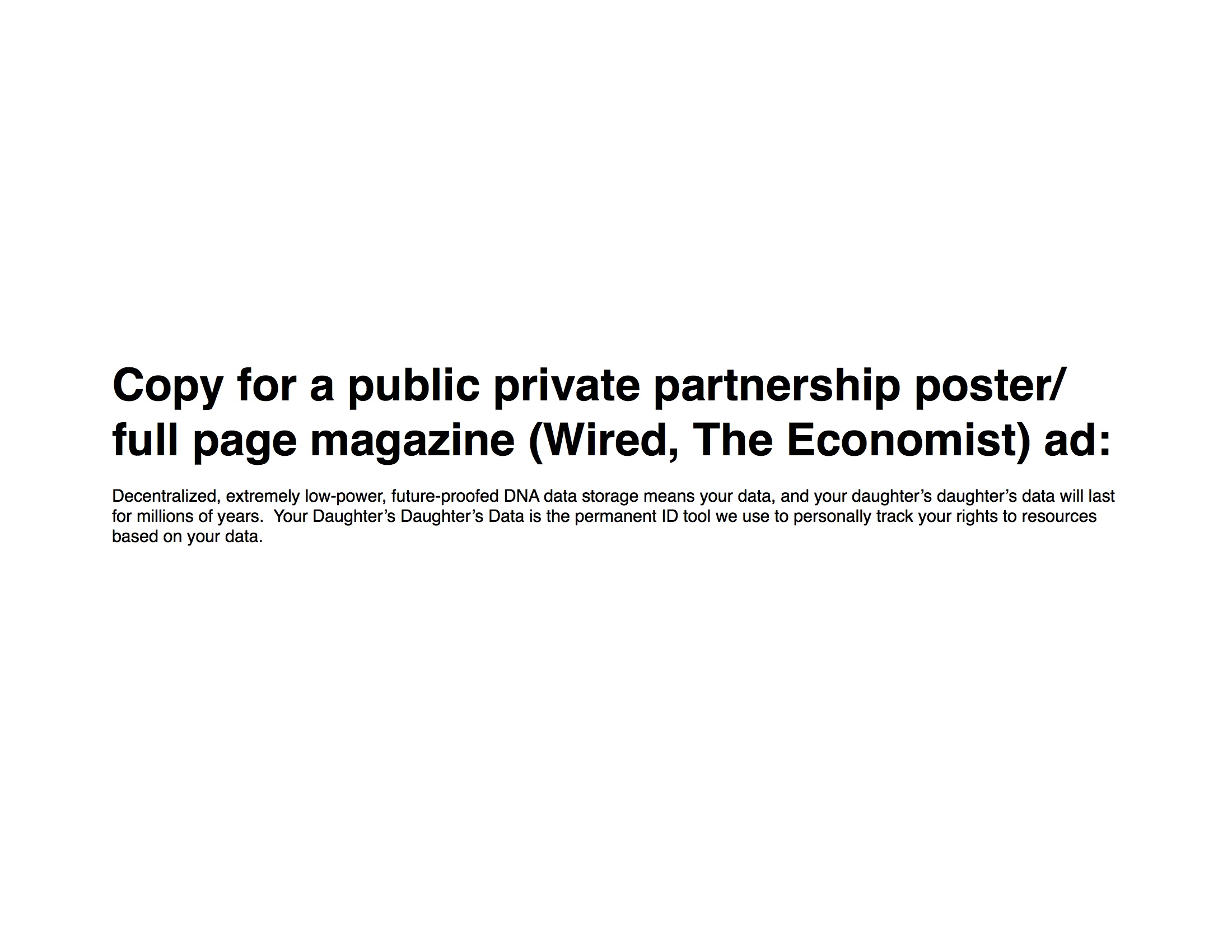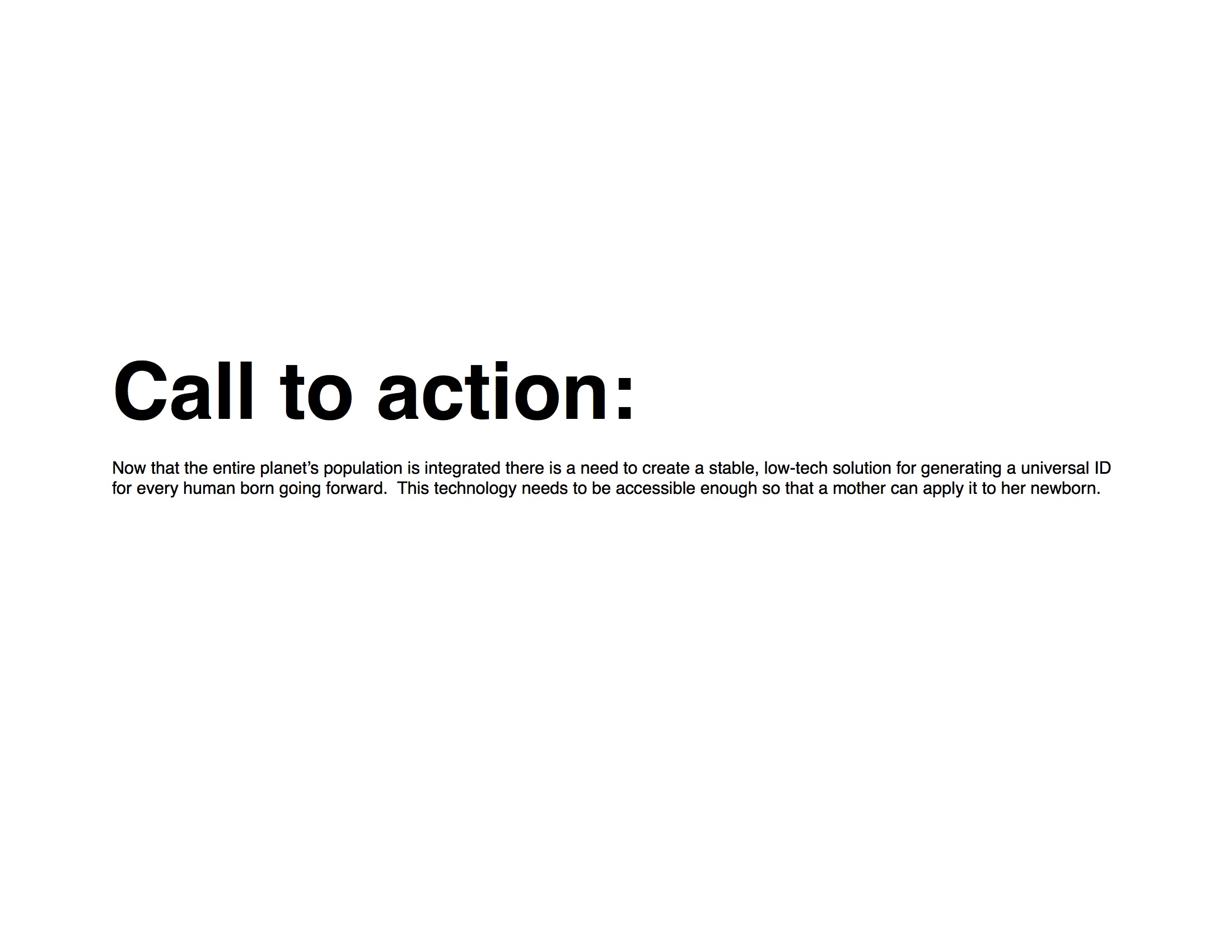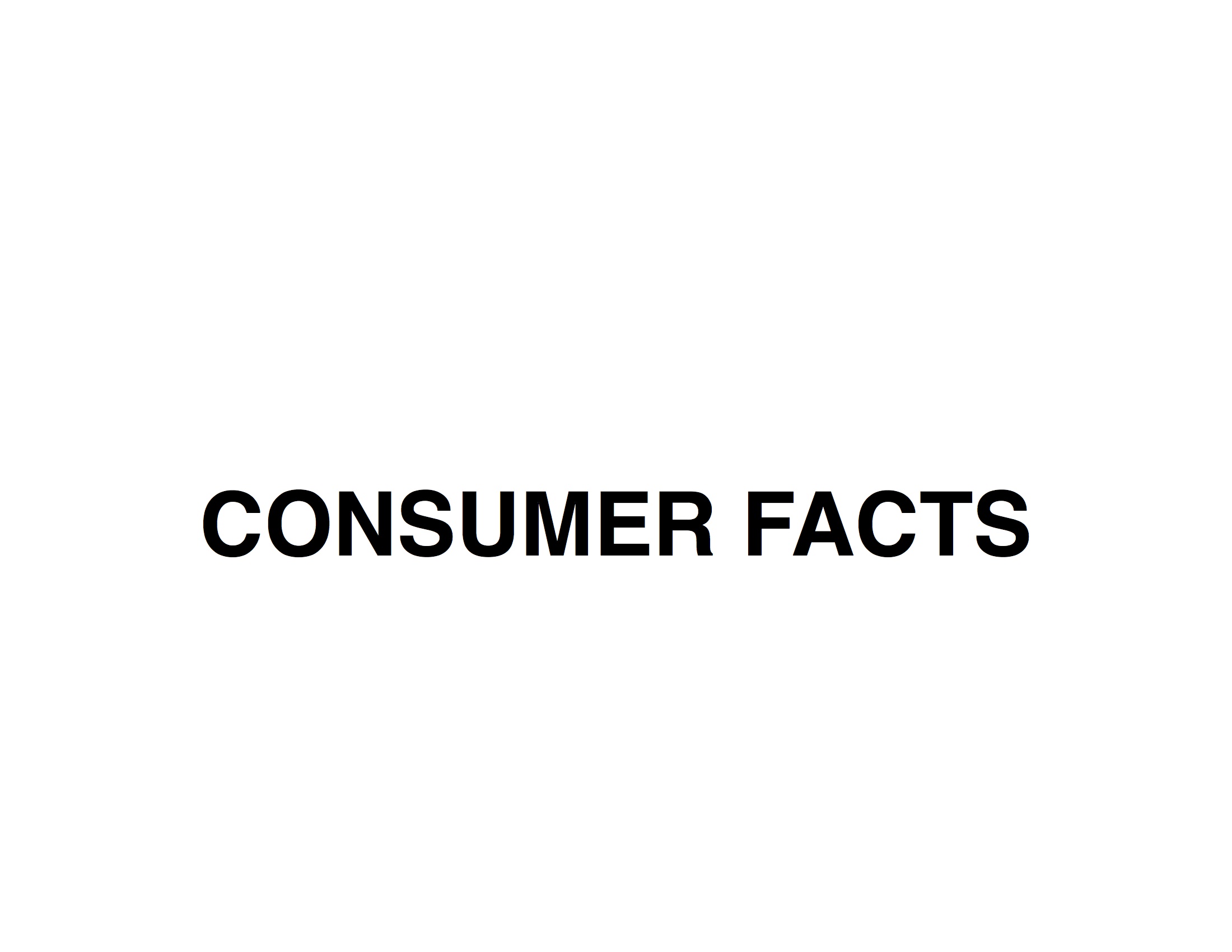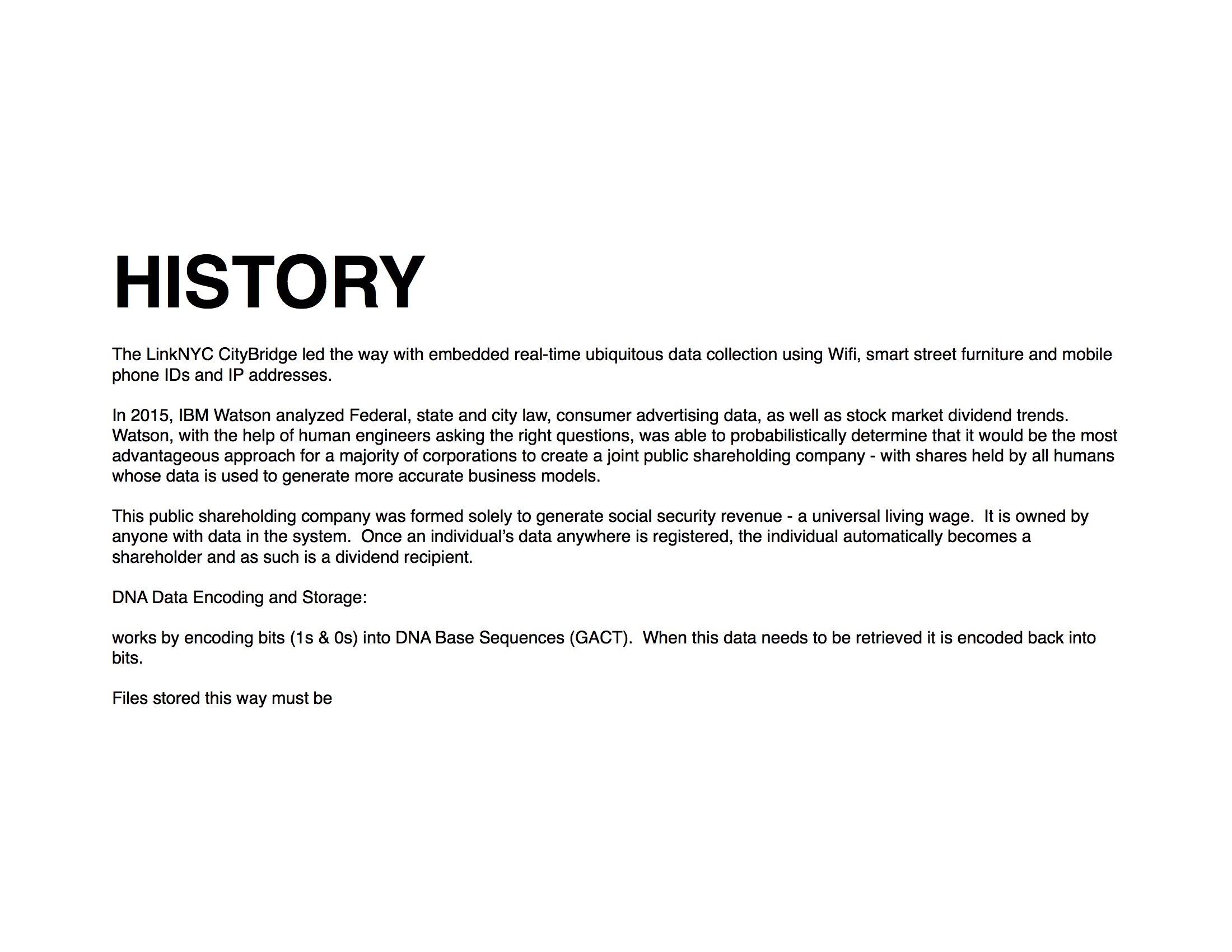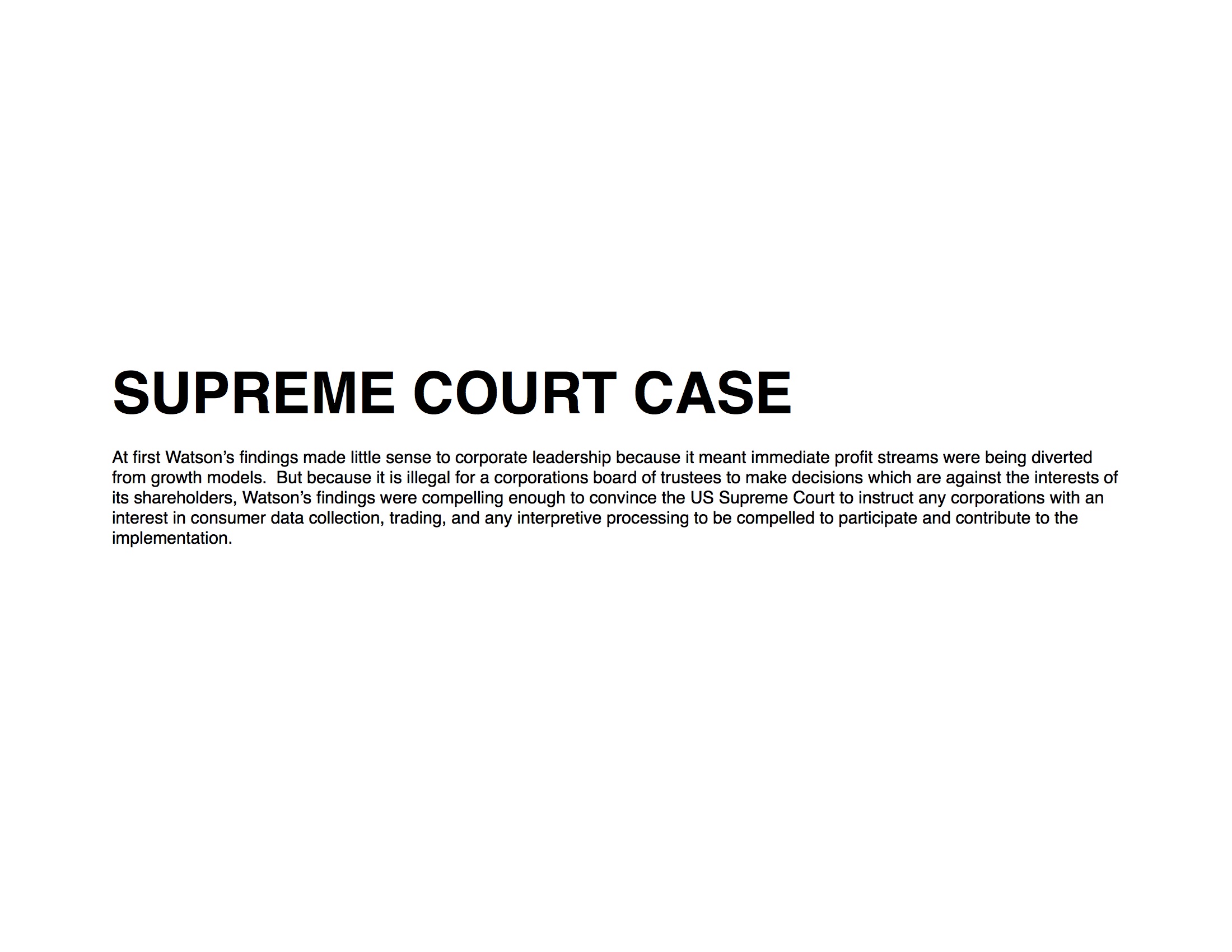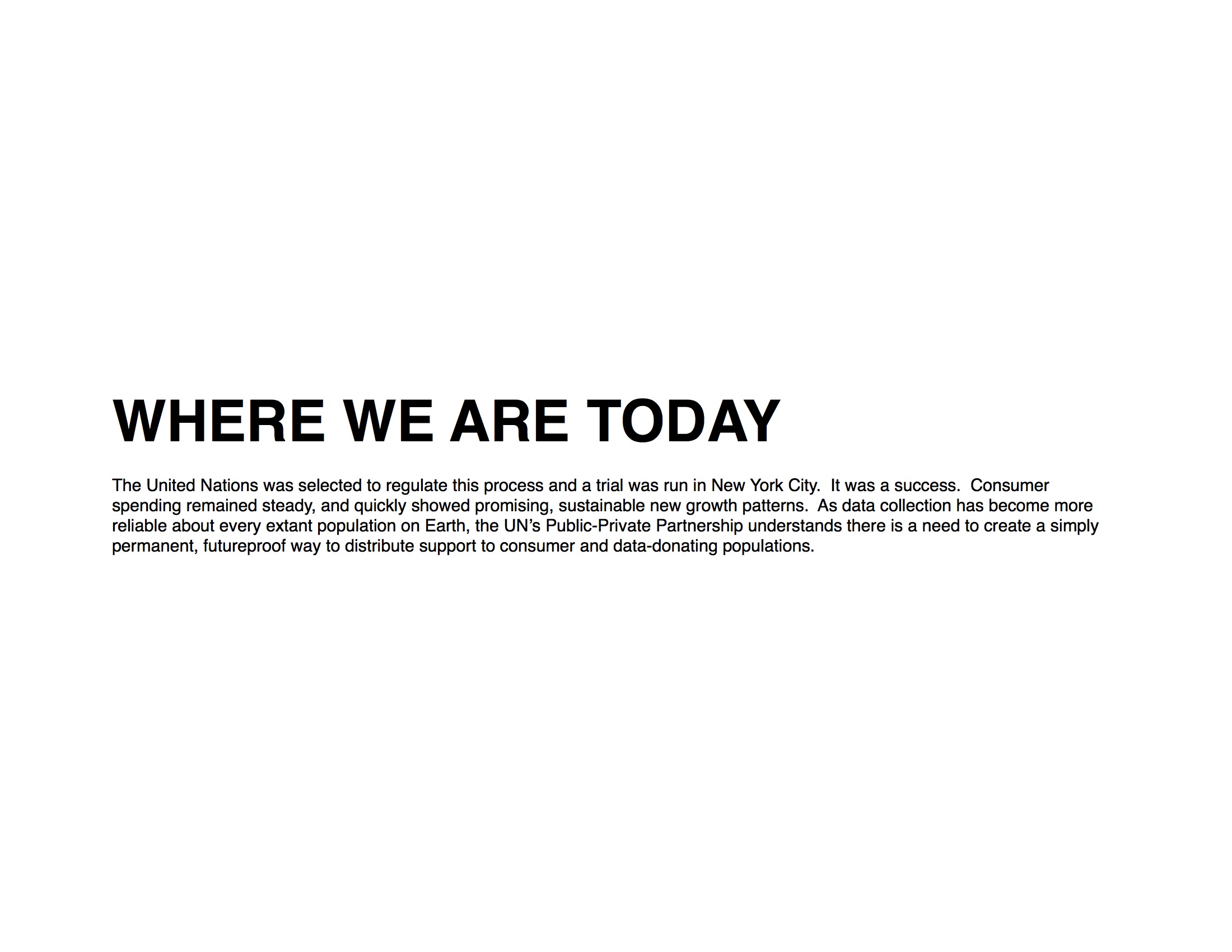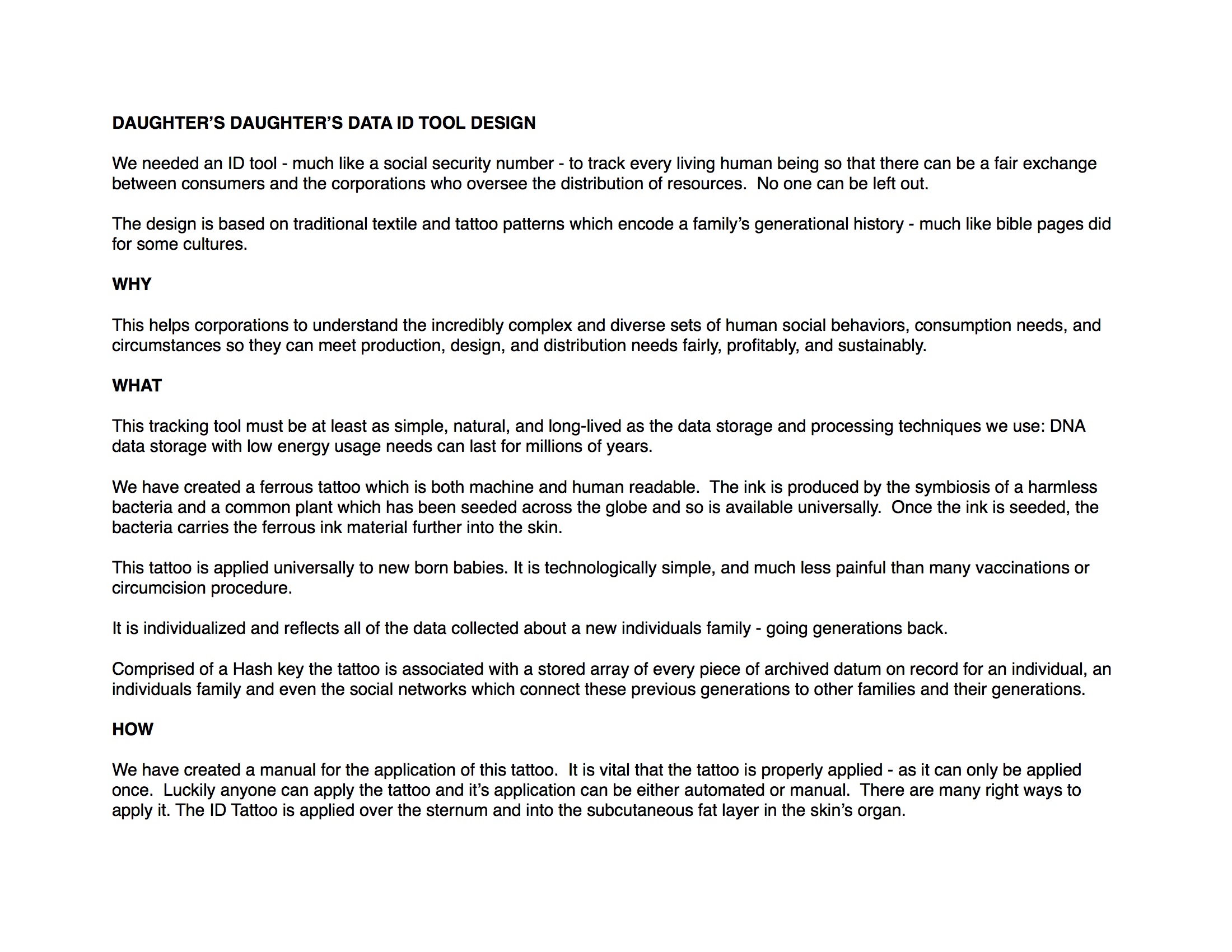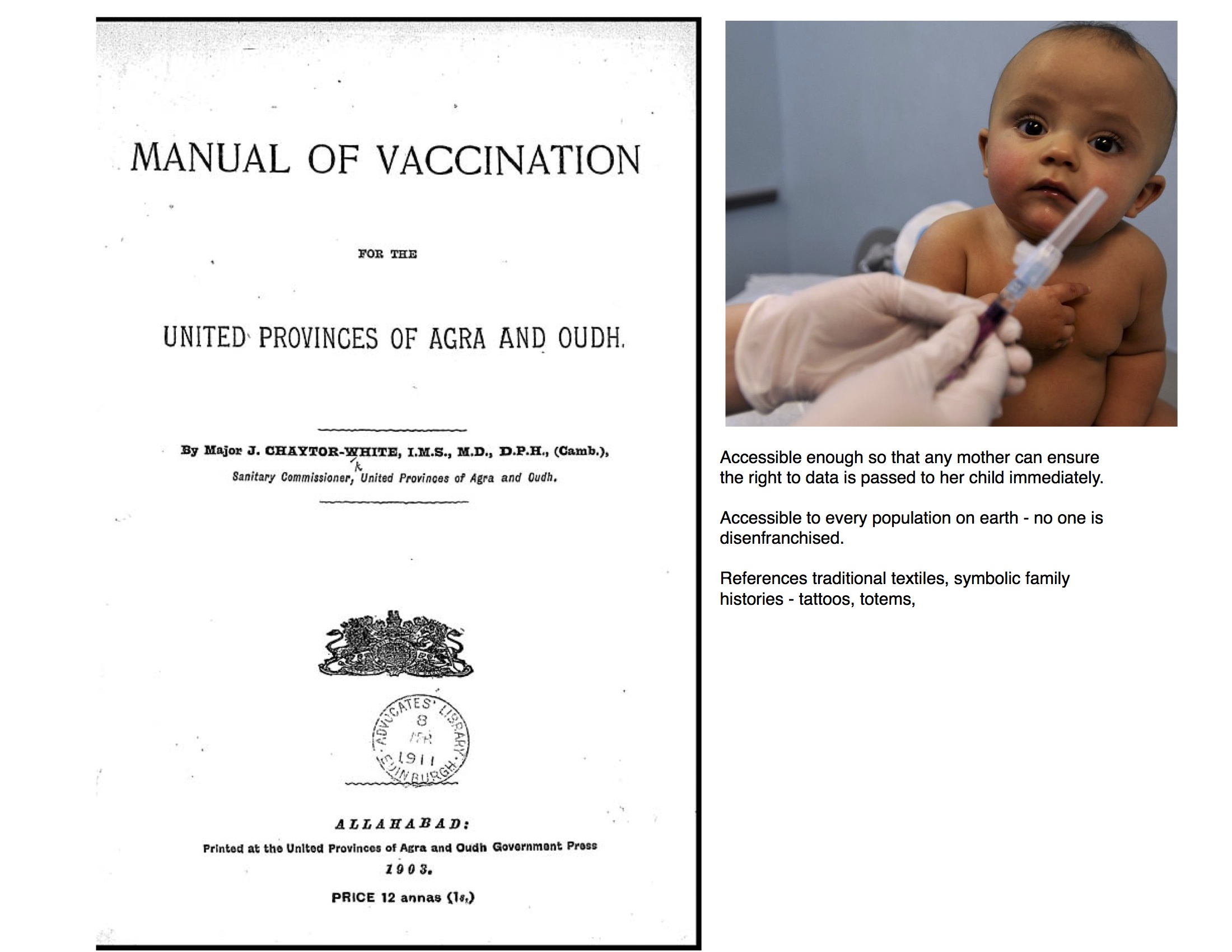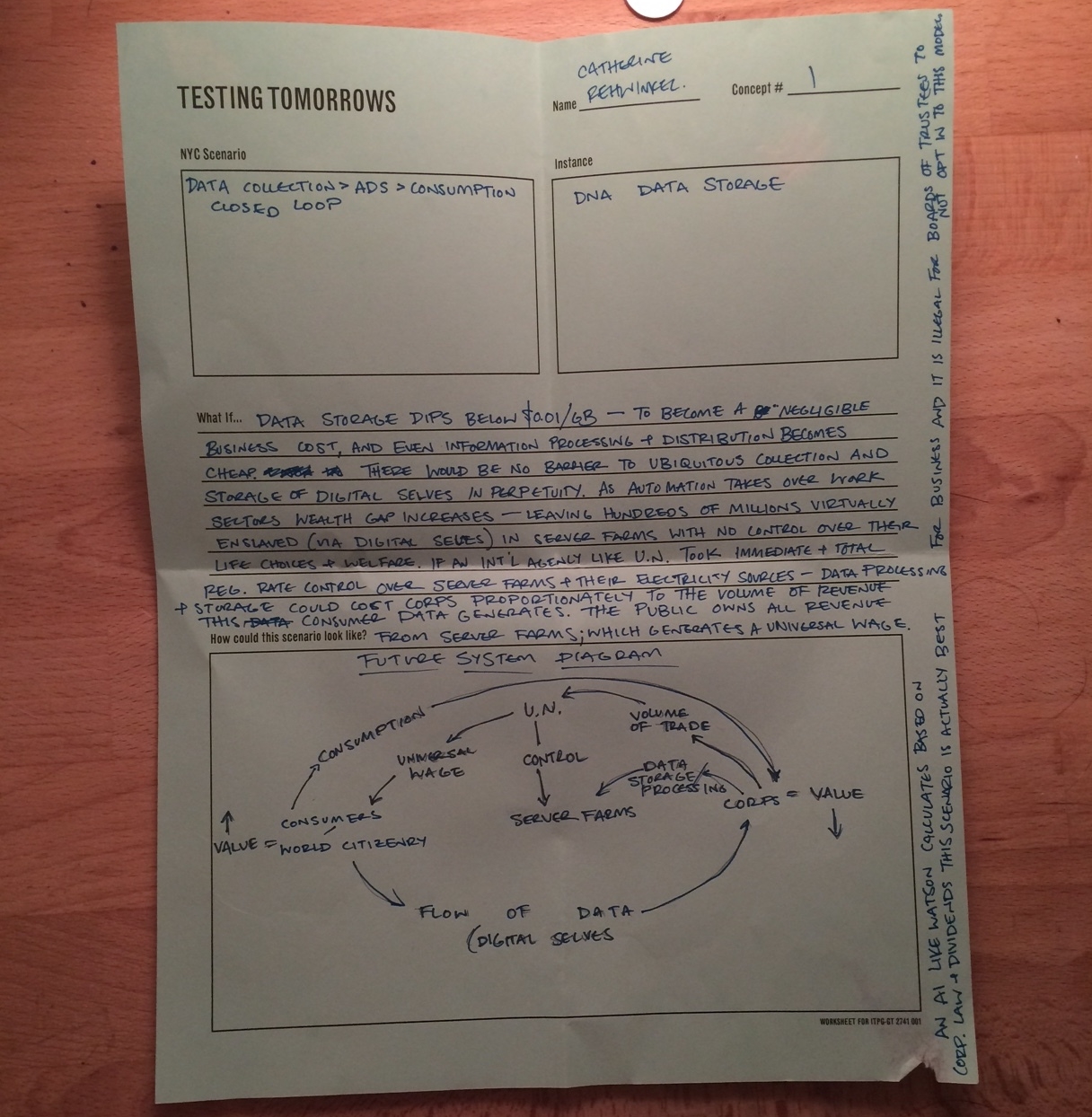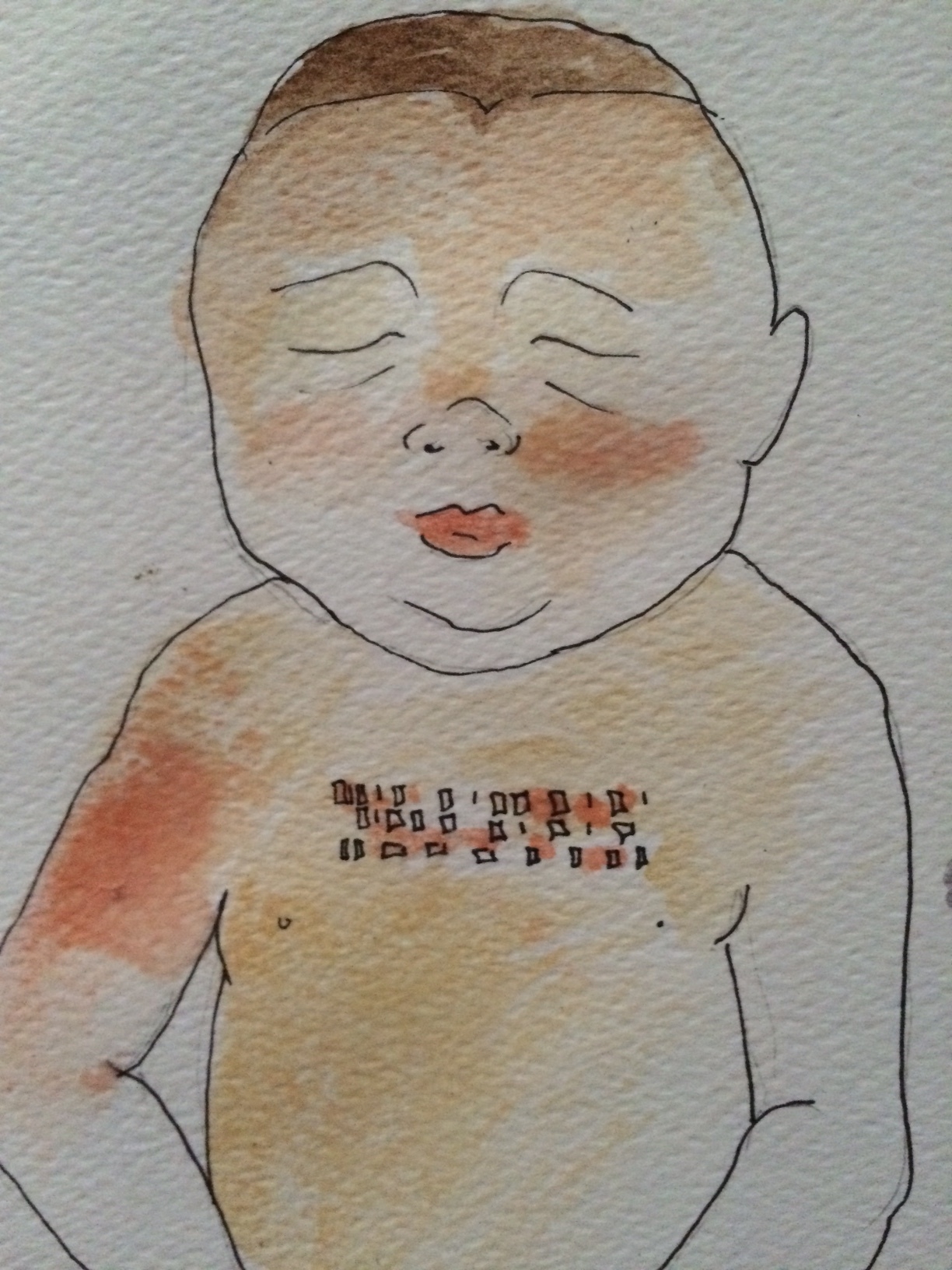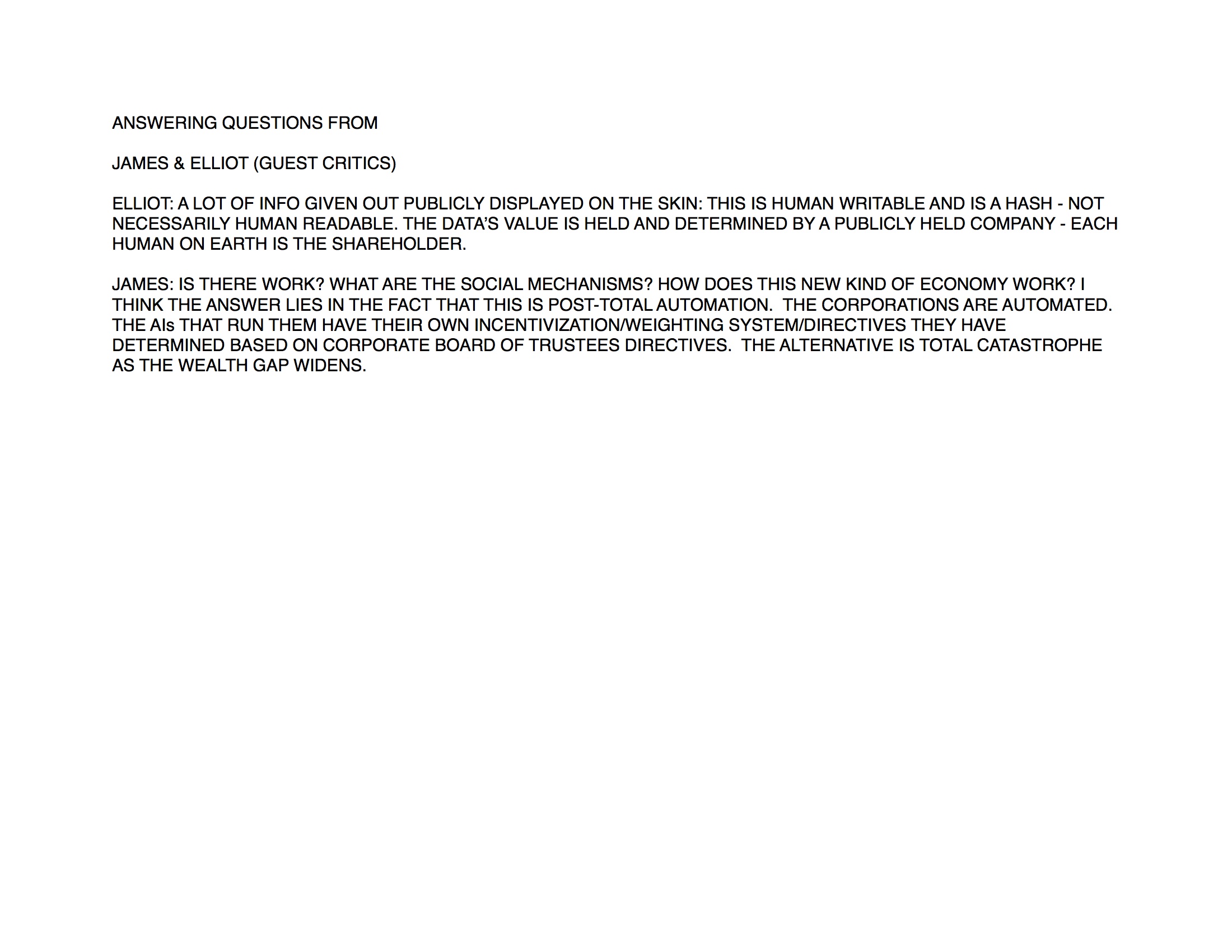CONTEXT (TESTING TOMORROWS: SPECULATIVE DESIGN)
A weekend course taught by Chris Woebken and Richard The. The prompt was to think of three common New York situations and then speculate on each's intersection with a recent tech/science development or a prediction made by reputable futurists.
I was most interested in the idea of New York City as a closed loop of consumer data collection, advertisement/user testing, consumption and have recently been startled by someone's presentation on the development of LinkNYC. The tech discovery I mashed with was DNA as a new option for potentially infinite data storage. The inspiration for this came from the notion (via my Stratosphere of Surveillance class) that the data we generate over the course of hours daily actually amounts to work and the processing, and, especially, storage of this data costs virtually nothing for the corporations who broker it at our expense. We reproduce our digital selves in ever-greater detail for corporations to trade and use and we do it for free without any idea of how it may be used 10 years or 1000 years from the moment we hover over the 'like' button on a political posting on our social network 'of choice.'
THE PROJECT
Then, I rapidly penned a scenario in which:
- data storage is infinite and all the earth's inhabitants generate trackable data
- an international agency (the UN??) becomes a regulatory body imposing data/server farm usage rates on corporations against their profit margins and the volume of data accessed quarterly, or whatever.
- post-automation corporations discover with the aid of a Watson-like AI (analyzing the law, consumer & GDP trends, and dividends) that the optimal profit-yielding trajectory to take would be to create a public shareholding company in which every world citizen is a recipient of a universal wage as a form of social security.
- At first shareholders and boards dislike this notion but then a Supreme Court case (or whatever) finds that because it is convinced by the AI's confidence assessment for the ultimate profitability AND because it is illegal for corporations to act against the best interest of the shareholders they must comply. Thus a robust public-private partnership is formed.
- a new type of economy emerges
RAPID EVOLUTION OF THE PROJECT
We next had to develop the concept further and present to two guest critics for the next day (second and final class session.)
So I had one of my favorite things - another future scenario which rejects the notion of labor-as-right-to-exist. But now what? Richard The had a great suggestion: make an object, an artifact which told a little piece of the story. He suggested a receipt as an example of something from this fictional future world which could bring it into relief and spark discussion.
In our first class session we discussed an example of extreme speculative design: a remarkable answer to a call for design ideas to communicate with earthlings 10,000 years from now to stay away from the Yucca Mountain nuclear waste site in a way that would be anthropologically certain to communicate a message no matter what the future paradigms become: artificially creating a glow-in-the dark feral cat population and an intentionally seeded myth to go with it about the source of their unnaturalness.
So taking inspiration from these, and my penchant for what I call "boomerang" technologies, I got the idea to design a tattoo - something that anyone from virtually any population - no matter how tech impoverished/bereft/resistant they were - could use as a social security number and universal personal identifier to ensure their right to their own data revenue. I had the idea that the human writable, machine readable tattoos could take after the familial histories procedurally encoded in the tapestries, pottery, totem poles, insignia of many traditional cultures all over the planet. It made sense, since I wanted this data ID to be something that any mother could imprint on her child almost immediately after birth - in the same way vaccines, umbilical cords, circumcisions are handled.
I went over the material I had in class with Richard and then put together the following:




